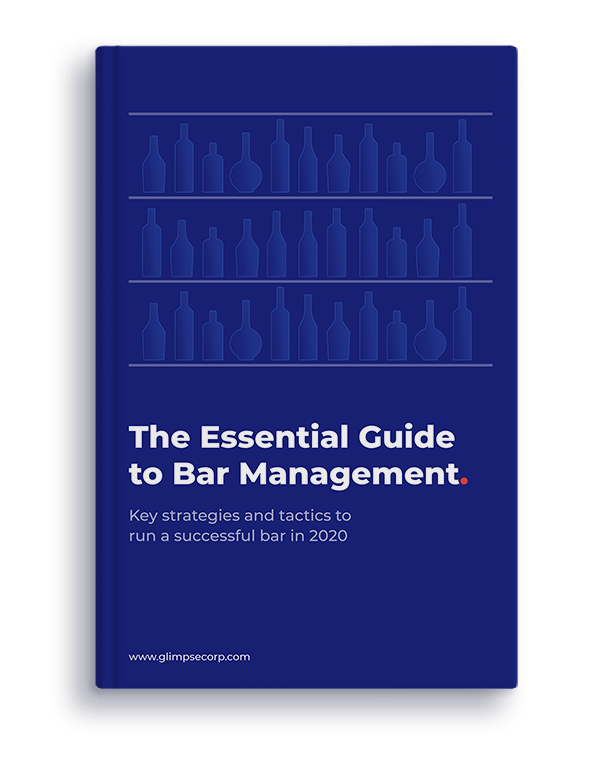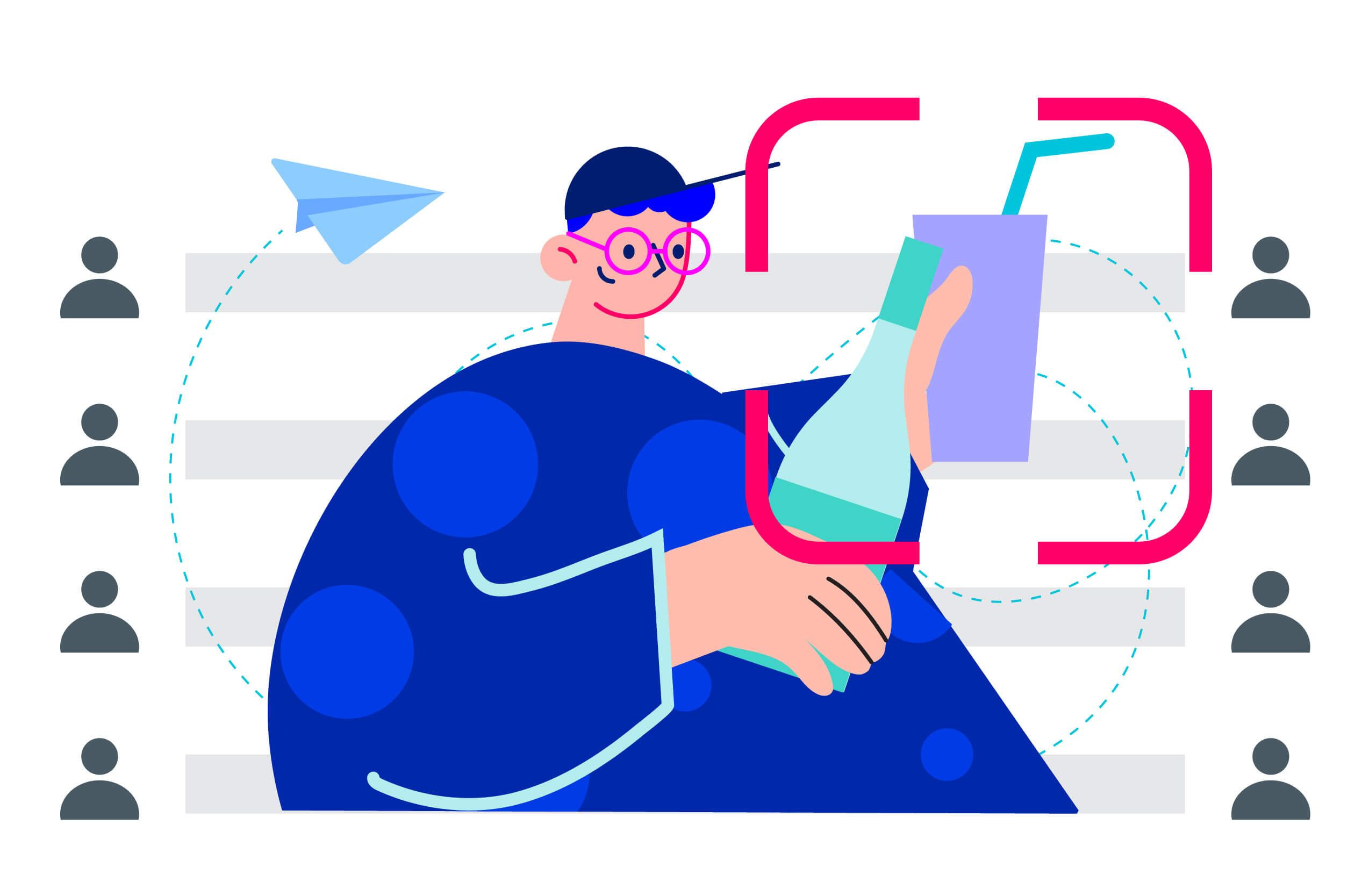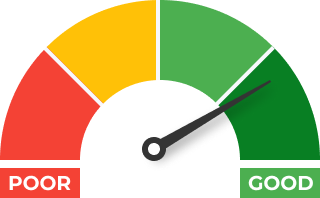No matter how experienced you are, running a bar can be challenging. You’ve got employees to manage, inventory to control, and customers to keep happy. You’ll also need to focus on profits and productivity.
These 18 tips can drive up your sales, boost your productivity, and help you be a more effective bar manager.
Duties of a Bar Manager
As a bar manager, it’s up to you to take care of all bar operations. The general responsibilities of a bar manager include:
- Promoting the business.
- Manage business aspects, such as liquor licenses.
- Hiring and training bartenders, servers, and kitchen staff.
- Creating work schedules.
- Ensure customers receive excellent service, drinks, and food.
- Dealing with customer complaints.
- Managing inventory and costs.
- Managing cashflow and budgets.
Now that we have a high-level overview of what’s involved, we can explore ways to improve each area.
1. Jump In and Love Your Job
Both your customers and employees should be able to sense your enthusiasm and love for your job. One of the ways you can show that you enjoy what you do is by getting behind the bar and pouring drinks with your employees and helping clear tables when it gets busy. Working alongside your employees is the sign of a good leader which can gain you the respect of your staff.
2. Offer More Than One Drink
People come to your bar not just for the drinks, but for the atmosphere and experience. Any bar can provide the drinks, so make your establishment one that offers a little more. Host nights once or twice a week that feature live music, trivia, or karaoke. Customers who are entertained while they have a drink will keep coming back for the experience.
3. Understand Your Target Market and Competition
Knowing how to manage a bar is important, but just as important is understanding your target market. What makes your bar stand out from the competition? Come up with a unique selling proposition that’s going to differentiate you from the bar around the corner. Whether it’s signature drinks, your bar décor, or a menu that features locally grown organic food, understand and embrace what your bar concept is all about.
4. Keep Your Menu Fresh
You’ll have drinks and food items on your menu that are customer favorites. But it’s important that you change it up and add new items to keep things fresh for your regular customers and to entice new ones to keep coming back. A good time to change the menu is seasonally, by adding trendy drinks to your lineup.
5. Mingle and Build Relationships With Customers
It’s customers who are going to drive your sales. This means getting to know some of your regulars and build relationships with them. Encourage your employees to take the time to talk with customers and learn their names – having a personal connection with people is what’s going to build up your list of regular patrons.
6. Keep a Clean and Tidy Bar
The first impression of your bar matters – customers want a clean and tidy place to enjoy their drink. Train your staff in the importance of cleanliness, encouraging them to quickly clear tables, wipe up spills from tables and floor, and keep the bar clean and organized. It’s also important to keep your bar in good repair, fixing tables and chairs not only for aesthetic reasons but for customer safety.
7. Hire Employees With a Great Attitude
Employees are the first thing customers are going to experience when they walk into your bar. Hire employees who are enthusiastic about their job and have a great attitude. Also look for team players who have a good work ethic, who are willing to go that extra mile for your customers. Having your employees reflect the positive atmosphere of your bar goes a long way in building up regular customers.
8. Have Weekly Employee Meetings
Weekly meetings with employees are a good way to go over things that aren’t working in your bar and things that are. This is the time to educate your staff on any new procedures and reinforce current bar policies. Meetings can also be a good time for team building – get everyone on the same page with a positive work attitude, emphasizing the value that each employee brings to the team.
9. Have a Fair Tip Policy for Employees
In the hospitality industry, most employees rely on their tips to increase their wage. It’s important for bar managers to recognize this and come up with a fair tip policy for all employees. Customers have the most contact with their server, so these are the employees who receive the majority of the tips. But as a bar manager, you know that every employee plays a role when it comes to customer satisfaction. This is why you need to come up with a fair way to distribute tips among your staff.
There are several different ways you can split tips. Some bars use a percentage system, where servers share their tips with other staff based on percentage, such as giving 10% of their nightly tips to the bartender and 30% to the rest of the staff. Another fair tip policy method is to pool together all or a percentage of the tips into one pot, with the manager splitting up all tips at the end of the night.
No matter what method of tip sharing you decide to use, it’s important that you have one, and here’s why:
- Fairly sharing tips means all employees benefit, including servers, bartenders, and kitchen staff.
- Tips are shared even if one area of the bar is less busy.
- Tip sharing encourages teamwork – all employees focus on great customer service.
Don’t forget to educate your staff about reporting their tips as income and that they’ll need to pay income tax on these tips. Although it comes down to individual choice, it’s better to record tips than it is to face an audit.
10. Manage Your Inventory Carefully
It’s important that you manage your inventory carefully, so your bar is well stocked at all times. This includes everything from liquor to bar napkins to food that comes out of the kitchen. Plan on doing a weekly inventory of all items in your bar, except for liquor, which should be inventoried daily. Here’s why. The more accurate you are with your liquor count the better you can manage your drink costs and efficiently maintain your inventory. You’ll also be able to accurately price drinks and decrease waste, increasing your profits.
When doing liquor inventory, come up with a system and stick to it. Consistency is going to ensure that the amounts are right each time, without room for error. If you’re not doing liquor inventory yourself, train your head bartender how to use the right method. You need to know exactly what you have behind the bar and on your shelves. Not enough of an item and you risk having to tell customers that you can’t make that drink for them.
Taking a daily liquor inventory also alerts you when your inventory and sales aren’t matching up. This is a red flag that your bartenders are over-pouring or giving away free drinks. With daily inventory you’ll be able to determine when and how much product is missing – then you can take appropriate action with your bar staff.
11. Streamline Your Cash Handling Policies and Procedures
Just as important as inventory management is cash management. Your cash handling policy is going to come down to three things: accountability, trustworthy staff, and having the right procedures in place. Decide who can handle cash, limiting access to people you can trust, like your head bartender or floor supervisor. Choose more than one person to handle cash – this way there’s a system of accountability in place. Have two or three employees in charge of all cash handling. This keeps them accountable.
Although less convenient, consider having a one-cashier-one-cash policy. Each server has their own cash drawer for the night, letting you know exactly what the starting float is and the final cash amount you expect to see that matches customer tabs. The consequences of having one drawer for all your servers is that anyone can take money – if there’s a problem with missing money you won’t know who’s to blame.
Once you come up with policies for cash handling, make sure that you implement them and that all your staff understands the procedures.
12. Choose the Right Bar Management Software
Successfully running your bar means being on top of every aspect from ordering to inventory to employee work schedules. Sure, you can do everything manually, but taking advantage of bar management software is going to automate some of these processes for you, letting you operate more efficiently.
Here’s what the right bar management software can do for you:
- Produce reports to track your sales and taxes.
- Simplify the process of employee scheduling.
- Accept payments with debit and credit cards
- Automate your inventory management.
- Track employee hours and monitor productivity.
The most popular and versatile bar management software is a POS system (point of sale), which can integrate many of the above processes into one software app. Other features of your POS include order and table management, integration with CRM software (customer relationship management), and menu setup.
13. Know Your Way Around the Different Bar POS Systems
Having a reliable POS system is critical for any bar – it helps monitor your sales, keep track of which employees are working on each shift, and manages your inventory. Once you’ve decided to invest in a POS system, make sure you know the ins and outs of your POS system, so you can take advantage of all of its features. Optimize your POS with features you’re going to use so you can increase your profits, improve efficiency, and boost your customer service.

Business Insights With Glimpse

Glimpse provides business analytics and loss prevention technology for bars, restaurants and nightclubs.
Learn More14. Keep Up To Date With Certification and Licensing
Keep up to date with professional certification and licensing. Not adhering to rules and regulations can quickly shut your doors or lead to suspensions. The rules for liquor licensing will vary from state to state – so be sure you know the laws that pertain to you. You can lose your liquor license for serving minors, selling outside of authorized times, and over-serving your customers. Make sure you know and follow the rules.
15. Pay Attention to Your Bar Tools and Equipment
Making the perfect drink is a skill and your bar should have all the right tools and equipment to set your bartenders up for success. Make sure you and your staff are familiar with all the essential bartending tools and how to use them. Some of the basic tools include jiggers for accurate measuring, shakers for creating mixed drinks, and bar spoons for drinks that are stirred rather than shaken.
16. Invest in Management Courses and Bartender Training
Even if you’ve been running a bar for a few years, it’s important to keep learning about the best practices for management and bartending. Taking a course lets you stay current with today’s trends, so you know what customers want and expect when they visit your bar.
17. Read Best Bar Management Books to Stay Informed
If you’re in bar management, you no doubt love the hospitality industry and thrive on operating a successful bar. But there’s always room for improvement and inspiration. There are numerous books written by managers, owners, and even chefs that are filled with tips and advice. Read about how to manage your own stress on nights where everything just seems to go wrong. Or find out how you can extend the philosophy of hospitality to every customer who enters your bar.
18. Prevent Theft
No bar manager wants to think about it, but theft is happening all the time – bartenders and servers over-pouring, stealing product, and giving away free drinks and food. Theft can significantly drive up your costs and lower your profits. Have procedures in place to prevent theft, such as regularly checking tabs and routinely reconciling cash drawers. Other methods to prevent theft include installing security cameras and investing in video recognition software that compares your security footage with your POS data.
Final Thoughts On Bar Management
You work hard to keep your bar running smoothly and efficiently. Knowing how to optimize your time and put policy and procedures into place for your employees can go a long way in making your job as a bar manager easier.
Using these 18 tips can drive up your sales and profits and increase your productivity, making your bar a success for you and your customers.










 +1 (786) 292-2373
+1 (786) 292-2373 insights@glimpsecorp.com
insights@glimpsecorp.com





